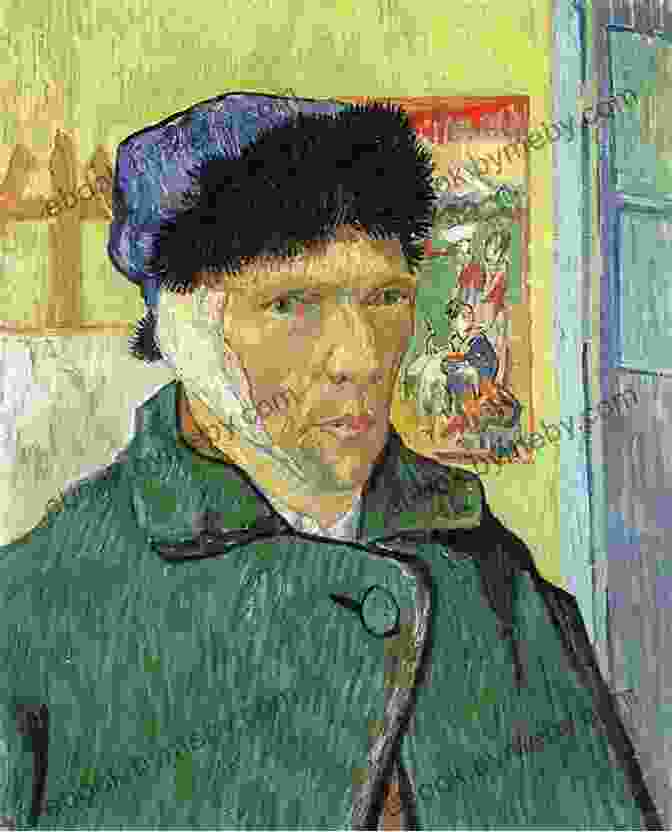Vincent van Gogh, the legendary Dutch post-impressionist painter, is widely regarded as one of the greatest artists of all time. His captivating artwork, characterized by vibrant colors, bold brushstrokes, and intense emotion, continues to inspire and captivate audiences worldwide. In this article, we delve into the life and work of Vincent van Gogh, uncovering 14 fascinating facts that shed light on his extraordinary journey.
1. Early Life and Inspiration
Vincent van Gogh was born on March 30, 1853, in the village of Zundert, Netherlands. From a young age, he exhibited a keen interest in art but initially pursued a career in the art trade. However, after a series of failed attempts, he decided to devote himself entirely to painting in 1880. Inspired by the works of Jean-François Millet and Jules Breton, van Gogh began depicting the lives of ordinary people and rural landscapes.
4.8 out of 5
| Language | : | English |
| File size | : | 1303 KB |
| Text-to-Speech | : | Enabled |
| Screen Reader | : | Supported |
| Enhanced typesetting | : | Enabled |
| Word Wise | : | Enabled |
| Print length | : | 48 pages |
| Lending | : | Enabled |

2. The Paris Period
In 1886, van Gogh moved to Paris, where he encountered the vibrant art scene and met fellow renowned artists such as Paul Gauguin and Henri de Toulouse-Lautrec. During this period, his palette shifted towards brighter and more vibrant colors, and his brushwork became more expressive. He experimented with various techniques, including pointillism, and explored themes of urban life and nightlife.
3. The Yellow House in Arles
In 1888, van Gogh rented the Yellow House in Arles, France, where he hoped to establish an artist's colony. He invited his friend and fellow painter Paul Gauguin to join him, and together they created some of their most famous works. This period was marked by intense artistic collaboration and experimentation, leading to the development of van Gogh's distinctive style.
4. Mental Health Struggles
Throughout his life, van Gogh struggled with mental health issues, including bouts of depression and psychosis. These struggles often manifested in his artwork, particularly in the later years of his life. His use of vivid colors and exaggerated forms reflected his inner turmoil and heightened perception.
5. The Self-Portrait Master
Van Gogh produced more than 35 self-portraits throughout his career, offering a profound insight into his physical and emotional state. These portraits reveal his changing appearance, from his early bearded days to his later gaunt and intense gaze. They provide a unique window into the artist's introspective nature and his struggles with identity.
6. The Starry Night
One of van Gogh's most iconic works, The Starry Night, was created while he was institutionalized in the asylum in Saint-Rémy-de-Provence. This captivating painting depicts a swirling night sky with vibrant stars and a peaceful village below. It exemplifies his mastery of color and perspective, creating a sense of cosmic wonder and tranquility.
7. The Postman and the Letter
Another well-known artwork by van Gogh is The Postman, painted in 1889. This poignant depiction of a postman delivers a letter against a stark backdrop reveals the artist's fascination with everyday life and his empathy for ordinary people.
8. The Wheatfield with Crows
Created shortly before his death, The Wheatfield with Crows is a haunting and evocative painting that reflects van Gogh's inner turmoil. The barren wheatfield, ominous crows, and threatening sky convey a sense of desperation and impending doom.
9. The Tragic End
On July 29, 1890, Vincent van Gogh took his own life at the age of 37. The circumstances surrounding his death remain shrouded in mystery, but it is believed that he suffered a mental breakdown and shot himself in a wheatfield.
10. Posthumous Recognition
Although van Gogh's genius was not fully recognized during his lifetime, his work gained widespread acclaim in the early 20th century. Today, he is considered one of the most influential and revered artists in Western art history.
11. The Legacy of Vincent van Gogh
Vincent van Gogh's legacy extends far beyond his own lifetime. His unique style and emotional expression have had a profound impact on subsequent generations of artists and continue to inspire and captivate audiences worldwide.
12. The Van Gogh Museum
Located in Amsterdam, the Netherlands, the Van Gogh Museum is dedicated to the life and work of Vincent van Gogh. It houses the largest collection of his paintings and drawings and offers a comprehensive insight into his artistic journey.
13. The Immersive van Gogh Exhibit
In recent years, Immersive van Gogh exhibitions have become a popular way to experience his artwork. Using cutting-edge technology, these exhibitions project van Gogh's paintings onto large surfaces, creating a breathtaking and immersive sensory experience.
14. The Enduring Appeal of Vincent van Gogh
Vincent van Gogh's artwork continues to resonate with people of all ages and cultures. His passionate brushwork, vibrant colors, and emotional intensity connect with our own human experiences, making his paintings both timeless and universally appealing.
Vincent van Gogh's life and work are a testament to the enduring power of art. Despite his personal struggles, he remained dedicated to his craft and created some of the most iconic and emotionally resonant paintings in art history. Through his unique style and expressive use of color, van Gogh continues to captivate and inspire, leaving a lasting legacy that will continue to resonate for generations to come.


























































































